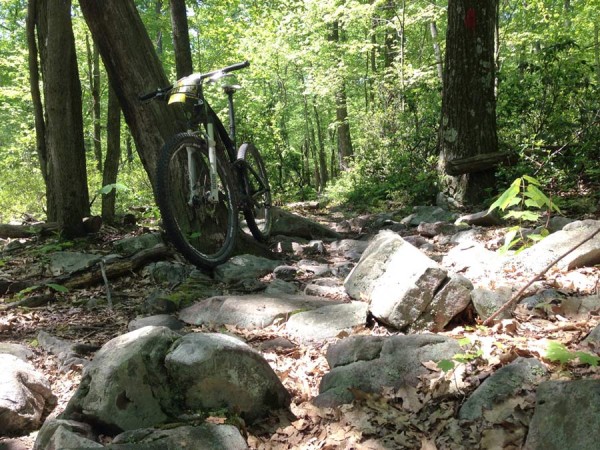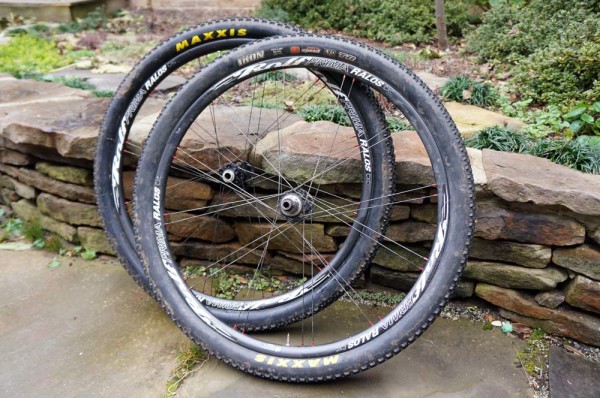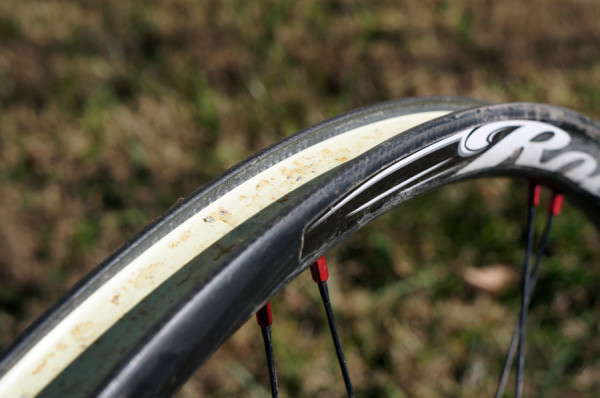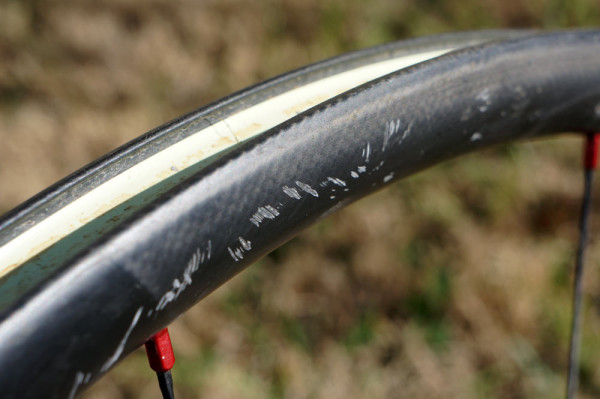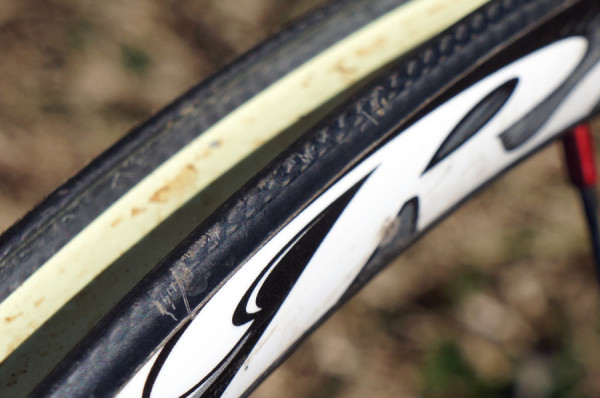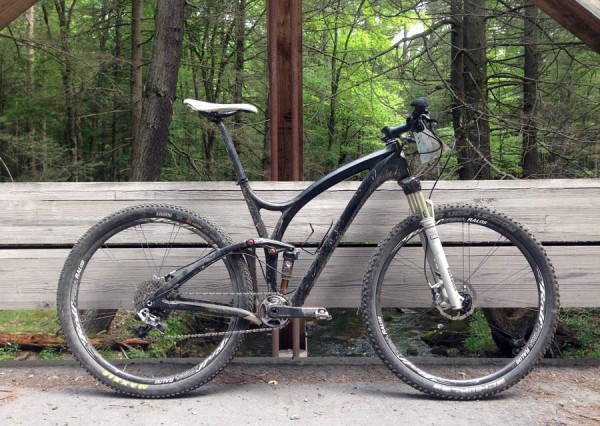Last summer, I mounted the Rolf Prima Ralos CXC 29er carbon-rimmed wheels to my Niner in preparation for the Trans-Sylvania Epic stage race. I wanted something lightweight to ease the climbing, and at 1527g for the pair (with thru-axle and XX1 XD Driver configuration), they met that criteria. They’re also wide, measuring in at 20.54mm internally. Full specs, measurements and pics are in our Unboxed intro.
The big unknown was whether the minimalist paired spoke design and carbon rims would hold up to the rocks and long, rapid descents of Pennsylvania’s mountains. And then the rest of the year’s worth of riding. And be stiff enough under a roughly 200lb rider load (me + clothes + pack + water).
The terrain certainly put them to the test. Not only were their plenty of rocks and high speed hits, but I managed to poke enough holes in a tire on one day that sealant simply couldn’t cope. Right in the middle of an enduro section on the enduro stage, after the second flat I’d had enough and decided to push on for the remainder of the timed segment. Pedaling and riding over roots, rocks and trail with nothing but a flaccid piece of rubber between rim and ground, I could hear things crunching, banging and grinding. Stupid? Perhaps, but wait until you see the damage…
The race started on Schwalbe’s Rocket Ron Snakeskin, which are light and fast, but their XC tires force you to choose between sidewall or tread protection. A lightweight tire with both simply isn’t offered by the German brand yet. Sure enough, all 13 of the punctures were in the tread bed, sidewalls were perfect. There were simply too many big cuts for the sealant to work. We tried a CO2 and it was like a garden sprinkler pinwheel of sealant. So, the second half of the weeklong race was ridden out on Maxxis Ikons.
The wheels come pre-taped with Stan’s NoTubes yellow tape. Both brands of tires seated up easily and held a nicely rounded profile. To me, that suggests the ~28mm outer/20.5mm inner width is a sweetspot for 2.2ish tires. The bead hook is thick and the rims finish with a smooth, curved shape that didn’t damage the tire’s sidewalls despite riding almost two miles with a flat rear tire. It even held onto the tire while flat.
They also held air really well (which, I know, has as much to do with the tires as the wheels) despite running them without the recommended rubber strip on top of the tape. Given that it’s sold as an option, I’d have a hard time recommending it since the performance was so good without it. And it adds 73g per wheel. I did take one corner particularly hard with really low pressure and the tire squirmed enough to let some grass get jammed between the bead and rim, which forced a stop to flick it out and pump it back up. I removed the crud with my finger, then reinflated with a mini-pump and it re-seated the tire quickly and easily.
So, looking for that damage? So was I. After riding a fair portion of two separate enduro segments on a flat rear tire, I expected complete carnage. What I found was a few small scrapes. Flesh wounds, really, and minor ones at that. These pics sum up the entirety of damage.
A few superficial scrapes barely made it through the clear coat, and the semigloss finish has muted a bit.
This little section of scratches on the rim edge were literally the only “significant” bits of damage I could find.
Following the TSEpic, these wheels saw another 6+ months of normal XC and trail riding with zero issues. From a handling perspective, I threw them into corners both sharp and wide and they tracked perfectly. The extremely light weight meant they spooled up quickly for sprints, too. What’s more, they were still visually true after all that. That’s one of the great benefits of carbon rims – they’re so stiff that a lightweight wheel performs extremely well under aggressive riding and they maintain their trueness long after an alloy rim would be warped silly. I had to perform zero maintenance on them during the test period. In fact, the only time I had to think about them was to consider just how freakin’ fast they let me be.
Honestly, there’s nothing I didn’t like about the Ralos CXC. I loved them. I didn’t want to give them back. I even liked the aesthetics of the paired spokes. I would (and regularly do) recommend these for anyone looking for a bombproof XC wheelset.
Rolf Prima makes various Ralos models, but the CXC is the only carbon one, and it’s only for 29ers. For those running standard cassettes, it comes with a machined titanium freehub. The XX1 freehub (tested) is steel also titanium, and parts are user interchangeable. Front wheel is available with a Lefty hub, too. At $1,799 they’re on low side of carbon XC wheels on the market.
